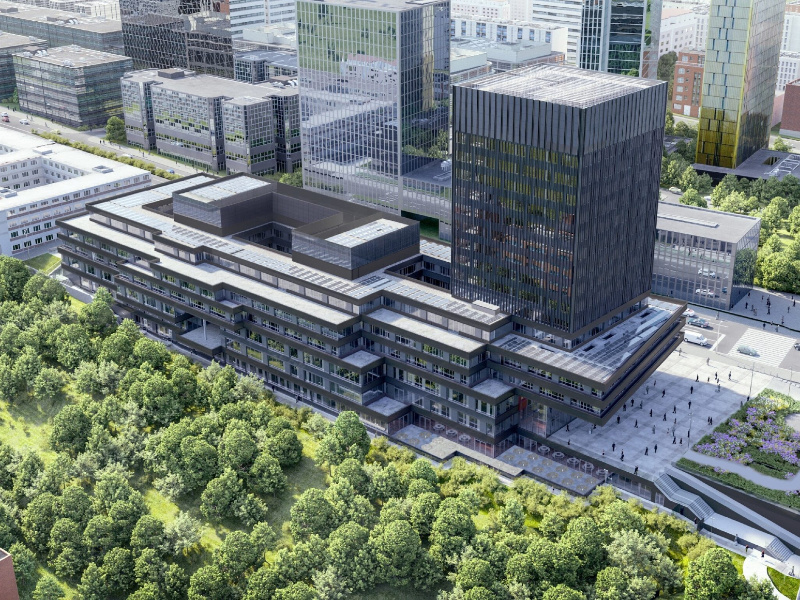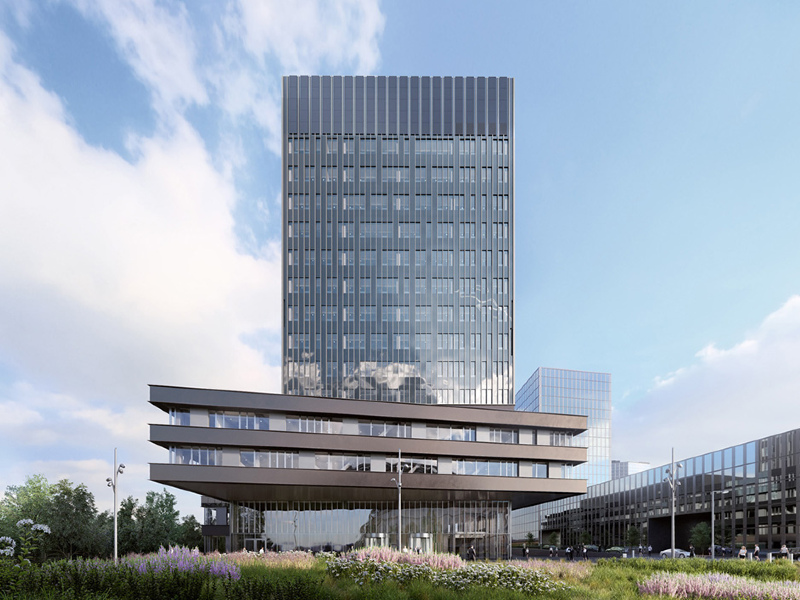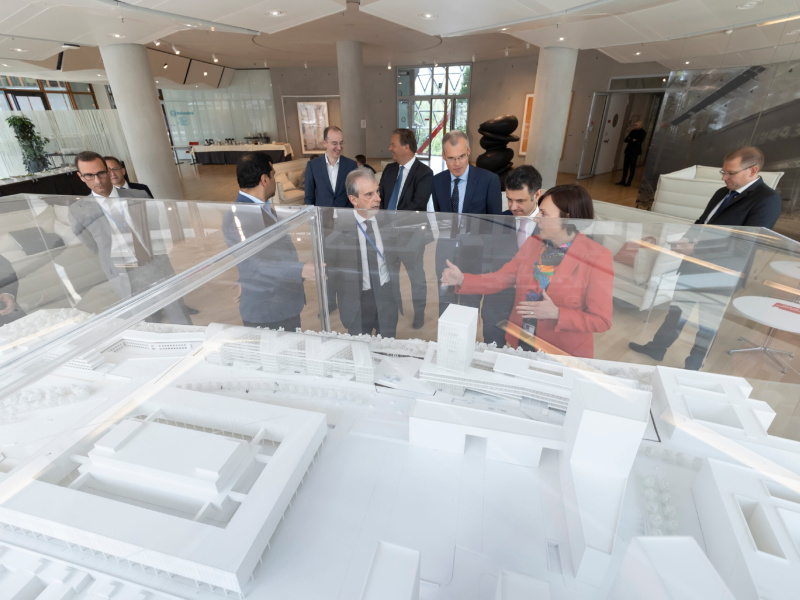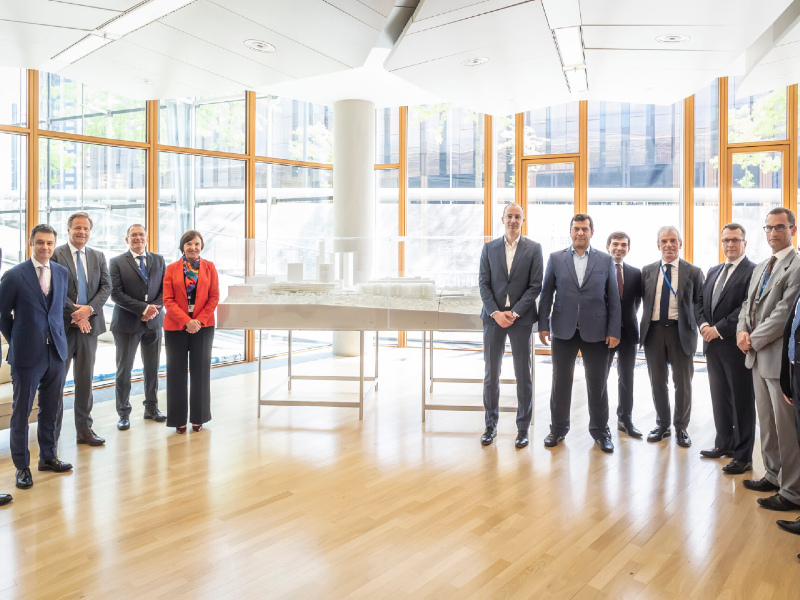European Investment Bank, the investment and lending arm of the European Union (EU), is building a third new building at its Kirchberg headquarters in Luxembourg.
EIB moved to its first building called West Building in Kirchberg in 1980, while the second building called the East Building was inaugurated in 2008. Construction on the new building started in August 2022 and is expected to be completed in 2025.
The EIB’s new headquarters project aims to bring the employees located in decentralised offices onto one campus. The new building will be able to house 1,500 workstations, while meeting the EU’s sustainability criteria and fundamental values.
Location
EIB’s newest headquarters is being built next to Boulevard Konrad Adenauer to the northeast of the financial institution’s second extension building in Kirchberg, Luxembourg.
Features of EIB’s new headquarters
EIB’s new building includes two distinct but complementary buildings, which will cover a total surface area of 62,000m² (667,362ft²).
The first building will be a seven-floor low-rise core building with a horizontal long-span form comprising a ground floor and six upper levels. It will be along Boulevard Konrad Adenauer, with a maximum of five floors being on the Val des Bons Malades side along with a 16-floor second vertical building. The vertical tower will open to a piazza and the second extension building.
The new building will mainly house the staff who are currently working in the first building, as the latter has reached its end-of-life. It will further include a multi-purpose auditorium, a conference centre, a state-of-the-art trading room, a gymnasium, a bar and a restaurant.
The building’s interior is designed to provide high levels of comfort for occupants through carefully balanced acoustics, and better daylighting, while maintaining a good thermal environment.
Design details
The new building has been designed to express the fundamental values of the EU and the EIB, which are respect for human dignity and human rights, freedom, democracy, equality, and the rule of law. With an enhanced public space, the building is expected to bring together the EIB campus and create a clear identity for the bank.
The design merges the sloping line of the adjacent landscape into the structure by creating stepped terraces in the horizontal building thereby creating a connection with the urban fabric and the adjacent EIB buildings.
The cantilevered trading room at the base of the vertical building will serve as the main entrance and feature a curtain wall glazed facade that will showcase the interiors of the building. The vertical tower will feature a series of atria and courtyards, which will provide stunning views of the valley.
The building will be installed with dark metal facade elements, which will be arranged horizontally on the low-rise building and vertically on the tower, complementing each other.
The interiors of the building will feature wooden slats, bronze glazed tiles, terrazzo floors and coloured accents.
Sustainable features of EIB’s new headquarters
EIB’s new headquarters is designed to achieve Nearly Zero Energy Building (NZEB) and attain Class A low energy building status. It will have a thermal envelope that can offer maximum energy efficiency.
In order to reduce the carbon footprint of the building, about 2,200m² of photovoltaic panels will be installed on the roof and some of the facades to generate up to 374MWh of clean energy a year. The generated solar power is anticipated to suffice up to 50% of the building’s power requirement, while the remaining energy required to run the building will be 100% renewable and certified.
A total of 250 car parking spaces will be available within the new building, out of which 60 will have charging stations for electric cars. EIB aims to convert all the car parking spaces into 100% electric in the coming years. In addition, 180 parking spaces will be available for bicycles and scooters.
The building is expected to receive BREEAM Excellent rating for its sustainable design elements.
Contractors involved
Mecanoo Architecten, a Dutch architecture firm, was selected as the lead architect for EIB’s new headquarters.
Buro Happold, a consulting engineer based in the UK, offered building information management (BIM), building services engineering, design project management, facade engineering, fire engineering, lighting design, structural engineering, and project and design management services for EIB’s new headquarters expansion.
The construction contract was awarded to a joint venture of Rizzani de Eccher, an Italian construction company, and Ballast Nedam International Projects, a construction company based in the Netherlands.
IDOM, an architecture and engineering company based in Spain, provided construction engineering services and is also responsible for supervising the work on behalf of the client.
ATI Project, an architecture design firm based in Serbia, served as a technical advisor for the project during the tender phase.







